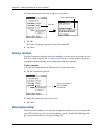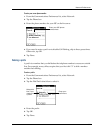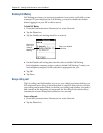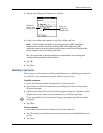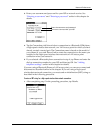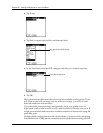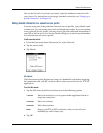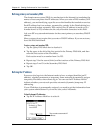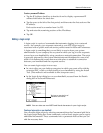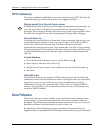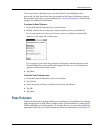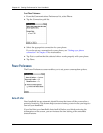
Chapter 21 Setting Preferences for Your Handheld
330
Defining primary and secondary DNS
The domain name system (DNS) is a mechanism in the Internet for translating the
names of host computers into IP addresses. When you enter a DNS number (or IP
address), you are identifying a specific server that handles the translation services.
Each IP address has four sections, separated by periods. In the Details dialog box,
you enter each section separately. Each section of an IP address is made up of a
number from 0 to 255; numbers are the only allowable characters in this field.
Ask your ISP or system administrator for the correct primary or secondary DNS IP
address.
Many systems do not require that you enter a DNS IP address. If you are not sure,
leave the DNS field blank.
To enter a primary and secondary DNS:
1. Tap the Query DNS check box to deselect it.
2. Tap the space to the left of the first period in the Primary DNS field, and then
enter the first section of the IP address.
Each section must be a number from 0 to 255.
3. Repeat step 2 for the second, third, and last sections of the Primary DNS field.
4. Repeat steps 2 and 3 for the Secondary DNS field.
5. Tap O K.
Defining the IP address
Everyone who logs in to the Internet needs to have a unique identifier (an IP
address), whether permanent or temporary. Some networks dynamically assign a
temporary IP address when clients log in. You can use the IP Address field to
indicate whether your network provides automatic (dynamic) temporary IP
addressing.
If your IP address is permanently assigned, you need to get that information from
your system administrator. If you are not sure, select Automatic.
To identify dynamic IP addressing:
■ Tap the IP Address check box to select it.
Tap to select automatic IP
address



